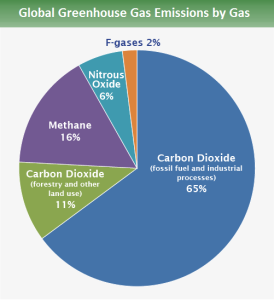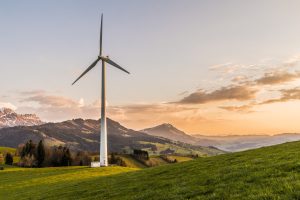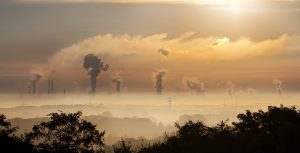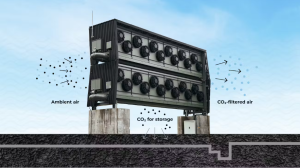World temperatures are rising because of human activity, and climate change now threatens every aspect of human life.
Left unchecked, humans and nature will experience catastrophic warming, with worsening droughts, rising sea levels, and mass extinction of species.
The world faces a huge challenge, but there are potential solutions.
What is CO2 and why can it affect the climate? How is carbon dioxide reduced in the atmosphere? Everything you need to know about this gas.
What is CO2, carbon dioxide?
Carbon dioxide is Earth’s most important greenhouse gas: a gas that absorbs and radiates heat. Unlike oxygen or nitrogen (which make up most of our atmosphere), greenhouse gases absorb heat radiating from the Earth’s surface and re-release it in all directions—including back toward Earth’s surface. Without carbon dioxide, Earth’s natural greenhouse effect would be too weak to keep the average global surface temperature above freezing.
By adding more carbon dioxide to the atmosphere, people are supercharging the natural greenhouse effect, causing global temperatures to rise.
According to observations by the NOAA Global Monitoring Lab, in 2021 carbon dioxide alone was responsible for about two-thirds of the total heating influence of all human-produced greenhouse gases.
Another reason carbon dioxide is important in the Earth’s system is that it dissolves into the ocean like the fizz in a can of soda. It reacts with water molecules, producing carbonic acid and lowering the ocean’s pH (raising its acidity). Since the start of the Industrial Revolution, the pH of the ocean’s surface waters has dropped from 8.21 to 8.10. This drop in pH is called ocean acidification.
What are the main sources of greenhouse gas emissions?
The respiration of any living organism consumes oxygen, produces CO2, and releases it into the atmosphere, including plants (however, the latter absorb more CO2 than they emit, thanks to chlorophyll photosynthesis).
Then there are the emissions caused by human activities, which have increased CO2 in the atmosphere by about 50 percent over pre-industrial levels, that is, before 1850.
To give an idea of magnitude, emissions from the 2010-2019 decade averaged 56 billion tons per year. At current emission rates (six and a half tons per person per year, on average) before 2030 temperatures could rise more than 1.5 degrees Celsius above pre-industrial levels, which is the limit to which the Paris Agreement, signed by 195 states, aspires.

Most of the carbon dioxide released into the atmosphere comes from burning coal, oil, and natural gas. In 2019, according to the Intergovernmental Panel on Climate Change (Ipcc), 34 percent of emissions from human activity were accounted for by the energy sector, 24 percent by industry, 22 percent by agriculture, deforestation, and land use, 15 percent by the transportation sector and 6 percent by the construction sector.
The amount of CO2 in the atmosphere is measured in parts per million (ppm): suffice it to say that at the turn of the century, the concentration of carbon dioxide in the atmosphere was about 290 ppm (parts per million), today it is about 410-420 ppm, and it is expected to reach 550-630 ppm in 2050 if steps are not taken aimed at decreasing it.
Why can high concentrations of carbon dioxide affect the planet’s climate balance?
Before we look at why carbon dioxide is harmful to the environment, let’s first consider why it’s helpful to the environment.
The greenhouse effect keeps our planet at a balmy 15°C – a temperature ideal for humans and other species to live and thrive in. Without gases such as carbon dioxide to create the greenhouse effect, the Earth’s average temperature would be -18°C. The world would be covered in ice, and life wouldn’t be as we know it.
The greenhouse effect is a good thing when it’s in balance. Here is where the problem lies.
The problem is that carbon dioxide is tipping the greenhouse effect out of balance. Before the 1700s, the Earth was happily regulating the greenhouse effect – absorbing solar energy and emitting greenhouse gases at a steady rate. Then, the Industrial Revolution happened. Emissions of greenhouse gases, predominantly carbon dioxide, have been steadily increasing and kicking the greenhouse effect out of balance.
What does this mean? Essentially, there are too many greenhouse gases absorbing the sun’s energy, which means our planet is slowly warming up. We know this as climate change. And there doesn’t appear to be an end in sight. Between 2000 and 2020, the Earth’s emissions more than quadrupled from the previous decade.
Experts predict that if our greenhouse gases continue to rise as they have done over the last half-century, the world will be 4°C warmer than before the Industrial Revolution by 2099. These rising average temperatures could cause:
- Ice caps melt and oceans warm, causing sea levels to rise.
- Extreme weather events such as heatwaves, heavy downpours, and wildfires
- Changes to where different wildlife populations can live and survive.
- Disrupted access to food
- Increased spreading of diseases such as malaria.
Which country produces the most carbon? The US emits the most: 5,800 million tonnes every year. Next is China, over 3,000; Russia, over 2,000; Japan, 1,200; and India, 1,000 million tonnes. Other major emitters are Germany, 800; Canada, 600m; the UK, 500m; and Italy, 47m.
How can CO2 emissions be reduced?
There are several ways to reduce CO2 emissions. Currently, the ecological transition, that process of transforming our economies under the banner of environmental sustainability, is focusing mainly on these goals:
- Replace fossil sources of energy with renewable sources (photovoltaic, wind, hydro, and others), benefiting energy demand and industry.
- Make mobility, and thus the transport sector, more sustainable, with an increase in electric vehicles and a gradual reduction in endothermic-engine vehicles powered by gasoline or diesel. This transition must be accompanied by a rapid replacement of fossil sources of electricity generation, necessary to power their batteries, with renewable ones. The use of biofuels also appears to be growing in recent years. Maritime transport and aviation are two sectors on which interventions are currently more limited but several strategies are in place to make them more sustainable in terms of emissions, especially through the use of alternative fuels.
- In agriculture, efforts are focused toward rationalizing the use of pesticides and fertilizers. Where the latter are necessary, lower-carbon ones produced using renewable energy can be opted for. Carbonic fertilization has also been experimented with in greenhouses, taking advantage of CO2 recovered from some industrial activities. Increasing overall efficiency and recovering energy and nutrients are key strategies for reducing the emission intensity of farming systems.
- Then there is the efficiency of buildings, that is, improving their energy performance.

What is carbon neutrality?
Carbon neutrality, as defined by the Ipcc, is achieved when the greenhouse gases emitted by humans are equal to those removed from the atmosphere over a certain period of time.
Carbon neutrality is achieved either through actions to reduce CO2 emissions or through offsetting actions, for example through reforestation. This is also why we talk about net zero, or zero emissions. Every country, city, financial institution and company must adopt plans to net zero emissions by 2050.

So on the one hand there are various human activities, each of which has a carbon footprint, that is, an amount of greenhouse gas emissions associated with it directly or indirectly. Greenhouse gases, however, are many: in addition to carbon dioxide, or CO2, there are also methane, nitrous oxide, and fluorinated gases, and each has a certain influence on climate that depends on its concentration, its permanence in the atmosphere and its global warming potential (GWP). To count the carbon footprint, greenhouse gases are equated with CO2 and then measured in tons of CO2 equivalent.
A new way of sucking carbon dioxide from the air and storing it in the sea has been outlined by scientists.
The authors say that this novel approach captures CO2 from the atmosphere up to three times more efficiently than current methods.
The warming gas can be transformed into bicarbonate of soda and stored safely and cheaply in seawater.

The new method could speed up the deployment of carbon removal technology, experts say.
While the world has struggled to limit and reduce emissions of carbon dioxide in recent decades, several companies have instead focused on developing technology to remove CO2 from the atmosphere.
Climeworks in Switzerland is perhaps the best known. Over the past ten years it has developed machines to suck in the air from the atmosphere that filter and trap the carbon dioxide molecules.
Final Thoughts
Unfortunately, there is no switch that can change this at the click of a button; we don’t have thousands of years to wait for nature to absorb the flood of CO2. By then, billions of people would have suffered and died from the impacts of climate change.
Therefore, the first step in the direction of sustainability is energy efficiency: making processes more efficient and reducing energy waste will help our economy become less and less dependent on fossil fuels and more quickly embrace clean sources.
We can avoid much of that damage and suffering through a combination of decarbonizing our energy supply, pulling CO2 out the atmosphere, and developing more sustainable ways of thriving.


